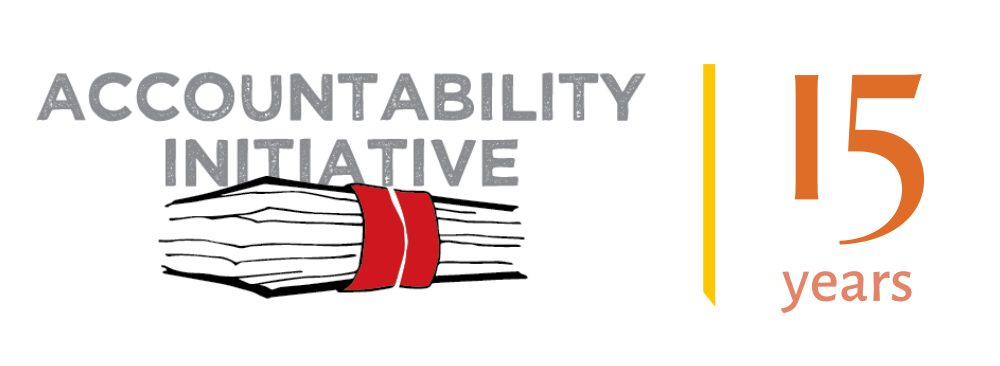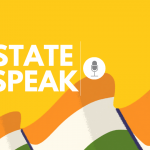
India’s Major Challenges in Realising Menstrual Health
11 October 2022
The previous blog in this series looked at how India’s existing menstrual health public service delivery prioritises the distribution of sanitary napkins (or pads). While the usage of sanitary pads – a hygienic menstrual method – by women and girls has improved, dependence on cloth remains high. Usage of other hygienic menstrual methods have not been given a policy push, especially at the Union level. This lack of comprehensive menstrual health contributes to period poverty, which is a situation of limited individual – and societal – level awareness of safe menstruation practices, and an inability to afford menstrual products.
The awareness and availability of different services – products or methods, and facilities – contribute to practising safe menstrual hygiene. It allows menstruators to make informed and empowered decisions. The lack of awareness, on the other hand, sustains the social and cultural taboos associated with menstruation. Thus, even though a lot of existing menstrual health public services are meant for adolescent girls, over 80 per cent of girls still believe menstrual blood to be harmful.
Further, as per the National Family Health Survey (NFHS 5) 2019-21, only 23 per cent never-married women discuss menstrual hygiene with health workers. Discussion on the topic further reduces significantly for ever-married women, who also do not use contraception, at 4 per cent. It is, thus, important to unpack how conversations on menstruation manifest at the grassroots. Who all is involved and who initiates such conversations?
This blog takes the example of a few frontline health workers’ (FLWs) experiences from two districts in Bihar [1].
In Bihar, FLWs initiate discussions on menstruation and women seldom bring it up themselves. These discussions are prompted in group settings, such as the Village Health, Sanitation, and Nutrition Committees (VHSNC) and Mata Samitis [2]. Accredited Social Health Activists (ASHAs) and Auxiliary Nurse Midwives (ANMs) explain how to properly use and dispose of sanitary pads. According to the health workers, women do not resist such information but do not seek any clarifications either. While there is also a general sense of awareness among the community because of television advertisements, women and girls without education are usually not comfortable discussing menstruation [3]. School-going adolescents, on the other hand, are open to discussing menstruation and also talk among themselves. However, conversations continue to be hushed around men.
Moreover, adolescent girls who go to school are entitled to ₹300 every year for buying sanitary napkins from the state government. While this amount is barely enough, health workers also express concern over the lack of medical facilities – including the purchase of napkins from regular shops – at the village level.
Lastly, in these two districts of Bihar, health workers had not received any kind of training on effective dissemination (posters, rallies, etc.) of menstrual hygiene at the community level.
In the above case, health workers prompted conversations in the community on menstruation. However, research also suggests that health workers may not be discussing it at all.
A recent study in Delhi’s government schools found that health workers and teachers do not complement the distribution of sanitary napkins with discussions on menstruation-related misconceptions. Another study found that a low supply of napkins, lack of an incentive, and inadequate training demotivated ASHA workers to aid scheme delivery, which includes conversations on the topic.
Lack of communication on behalf of health workers and limited awareness among menstruators is a critical barrier to optimal menstrual health.
But, there are other challenges too.
Unfunded mandates can under-prioritise menstrual health. Researchers at the Accountability Initiative (AI) found that sanitary napkins remained undistributed in the Sitapur district of Uttar Pradesh under the Rashtriya Kishor Swasthya Karyakram (RKSK) scheme. This was because the district did not spend on procurement of sanitary napkins over a period of four years and also failed to earmark any funds for their transportation to the last mile. While procurement and transportation are assigned functions under the scheme, the lack of earmarked funds makes it impossible to carry out the functions.
Moreover, poor financial planning for the procurement of sanitary products appears to be a widespread phenomenon in the country. Over the years, several states and Union Territories (UTs) have not reported any planned financing for the procurement of sanitary napkins under Menstrual Hygiene Scheme (MHS).
While transportation can be seen as an enabling aspect integrated with existing scheme delivery, several services remain outside of the purview of scheme design. Different enabling services are required to achieve comprehensive menstrual health. A ground report from Maharashtra’s Beed district found that women earning a livelihood through sugarcane cutting were not able to access safe sanitation and water facilities. Sanitation and water facilities are key enabling services for realising menstrual health. In the absence of such services, not only do these women wear unsanitary rags or cloth for long time periods, several of them have also been pushed to undertake the arduous procedure of hysterectomy to avoid missing work during menstruation.
Lastly, certain groups are also excluded at the policy level. The understanding of gender in binaries (male and female) is a barrier for transgender persons to access menstrual health services. There is no district, state, or Union level initiative that makes menstrual services accessible to transgender persons.
Conclusively, menstrual health service delivery in India remains constrained. It is not realised as a public health challenge and lacks key complementarities for women’s dignity and safety. On the one hand a predominant focus on the distribution of sanitary napkins faces shortcomings of poor quality and low supply under schemes such as the MHS, which the Ministry of Health and Family Welfare’s (MoHFW) own report admits. On the other hand, period poverty manifests, despite several initiatives to improve the availability of sanitary napkins.
All of this has serious consequences.
A recent study shows that households reduced their spending on period products during the pandemic, with rural areas bearing the major brunt of lockdown-induced shortages and accessibility challenges. Thus, even the shift towards using hygienic menstrual products, typically sanitary pads, may have been challenged since the pandemic incidence. At the same time, pads are not the only hygienic menstrual method; a holistic approach to service delivery is needed, the barriers to which have been identified in this blog. Further, not every menstruator has realised their right to avail menstrual health services from the government.
Recently, Scotland became the first country in the world to make all period products free for menstruators. Codifying this into law, the country instils a best practice scenario for every other country in the world to follow suit and acknowledge menstrual health as a fundamental right.
The author is grateful to Seema Muskan, Senior PAISA Associate, Accountability Initiative, for her insights from Bihar.
Tanya Rana is a Research Associate at Accountability Initiative.
Also Read: Under-prioritisation of Women’s Safety in the Union Budget?
Notes:
[1] FLWs include ASHAs, ANMs, and Anganwadi workers. We spoke to 3 ASHAs, 4 ANMs, and 3 Anganwadi workers from Nalanda and Patna districts. The role of Anganwadi workers is minimal.
[2] The Samiti comprises 7-12 members, including ASHA, Anganwadi workers, one person from Care India, and mothers. Mata Samitis are held once a month, majorly for health-related discussions.
[3] Women without school education are more likely to use unhygienic menstrual methods too. This was discussed in the previous blog.





